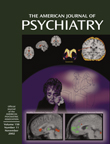Sweet’s Syndrome and Polyserositis With Clozapine
Ms. A, a 44-year-old Caucasian with a 26-year history of schizophrenia, was admitted to our facility because of neuroleptic-induced dyskinesia. She was suffering from auditory hallucinations and delusions of persecution. At admission, her treatment consisted of 12 mg/day of risperidone. The results of a physical examination were normal except for rhythmic choreoathetotic trunk movements. Laboratory tests showed normocytic anemia (3,700,000/μl) without acanthocytosis but otherwise normal results. Findings of cranial magnetic resonance imaging (MRI), chest radiography, ECG, and EEG were normal. There was no family history of movement disorders.Risperidone was discontinued, and clozapine was started at an initial dose of 25 mg/day and increased by 25 mg/day every other day to 150 mg/day. On day 8 of treatment, Ms. A complained of respiratory difficulty. Results of laboratory examinations revealed a WBC count of 13,000/μl, an erythrocyte sedimentation rate of 110 mm/hour, a C-reactive protein level of 116 mg/liter, a fibrinogen level of 11.8 g/liter, and a creatine kinease level of 121 U/liter. Results of cardiac enzyme measurements, an ECG, and echocardiography were normal. Ms. A’s body temperature rose to 103.1°F (rectal); watery diarrhea appeared, and she became delirious. The EEG indicated generalized slowing without focal abnormalities. A cranial MRI and measurement of cerebrospinal fluid level produced normal findings. Results of repeated blood and stool cultures were negative. Levofloxacin, 500 mg/day over 5 days, was ineffective. Extensive microbiological and immunological investigations produced inconclusive results. The results of a colonoscopy and a gastroscopy were normal.On day 16, ankle edema developed. Results of a gynecological examination and abdominal computerized tomography scan remained normal. Increasing dyspnea prompted a repeat chest radiography, revealing pleural and pericardial effusions and mediastinal lymphadenopathy. The ECG remained unchanged, and echocardiography indicated no compromise of cardiac function. Ms. A’s urine was positive for Bence Jones protein. On day 17, a generalized exanthema became apparent, consisting of well-demarcated, tender, erythematous papules and plaques. A skin biopsy yielded dense perivascular and periappendageal infiltrates of neutrophils and edema of the papillary dermis. Clozapine was discontinued.Within 2 weeks, Ms. A’s pericardial and pleural effusions resolved. All laboratory parameters returned to normal. Risperidone, 6 mg/day, was reintroduced. Over the next year, Ms. A exhibited some suspiciousness but no delusions or hallucinations. Her laboratory parameters remained within normal limits.
Reference
Information & Authors
Information
Published In
History
Authors
Metrics & Citations
Metrics
Citations
Export Citations
If you have the appropriate software installed, you can download article citation data to the citation manager of your choice. Simply select your manager software from the list below and click Download.
For more information or tips please see 'Downloading to a citation manager' in the Help menu.
View Options
View options
PDF/EPUB
View PDF/EPUBLogin options
Already a subscriber? Access your subscription through your login credentials or your institution for full access to this article.
Personal login Institutional Login Open Athens loginNot a subscriber?
PsychiatryOnline subscription options offer access to the DSM-5-TR® library, books, journals, CME, and patient resources. This all-in-one virtual library provides psychiatrists and mental health professionals with key resources for diagnosis, treatment, research, and professional development.
Need more help? PsychiatryOnline Customer Service may be reached by emailing [email protected] or by calling 800-368-5777 (in the U.S.) or 703-907-7322 (outside the U.S.).

